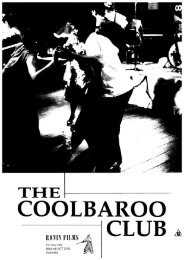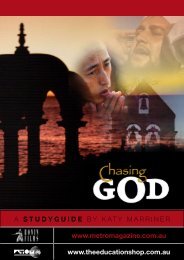to download THE LAST TASMANIAN study guide - Ronin Films
to download THE LAST TASMANIAN study guide - Ronin Films
to download THE LAST TASMANIAN study guide - Ronin Films
Create successful ePaper yourself
Turn your PDF publications into a flip-book with our unique Google optimized e-Paper software.
<strong>THE</strong> <strong>LAST</strong> <strong>TASMANIAN</strong><strong>THE</strong> CONTROVERSY<strong>THE</strong> <strong>LAST</strong> <strong>TASMANIAN</strong> had its first release in Australia in 1978. Its primary impact was inalerting white Australians that genocide was a fundamental aspect of their his<strong>to</strong>rical heritage. Butthe film also had its impact upon black Australians. Many Aborigines found it emotionallydistressing but at the same time a welcome illumination of events they had only known in roughoutline.However, from some Tasmanian Aborigines, there came protest, based on their view that the filminferred they no longer existed.The makers of the film encouraged this protest <strong>to</strong> be publiclyaired and, at their urging, was covered by the media, culminating in a one hour debate on ABCTelevision’s Monday Conference between filmmaker Tom Haydon and Aboriginal spokesmanMichael Mansell.Much has been written on this issue. Michael Mansell and others object that in its title, itsemphasis upon the extinction of traditional Tasmanian Aborigines and, in its treatment ofAboriginal descendants, the film denies the identity of those who <strong>to</strong>day call themselves ‘TasmanianAborigines’.It is important <strong>to</strong> put this controversy in his<strong>to</strong>rical context. At the time <strong>THE</strong> <strong>LAST</strong> <strong>TASMANIAN</strong>was being prepared and indeed filmed, the descendants of the original Tasmanians [there are nowsome 3000 of them] were still mostly calling themselves ‘descendants’ or ‘Cape Barren Islanders’and so they were termed in print by his<strong>to</strong>rians and other commenta<strong>to</strong>rs of the time [one or twoof these later joined with Mansell in his critique]. Before ever commencing the s<strong>to</strong>ry of genocide,the film devotes a section <strong>to</strong> ‘The Descendants’, explaining how these offspring of someAboriginal women and white sealers have survived in<strong>to</strong> the present day.The one woman whopresents her views in detail was chosen because she was then President of the Cape BarrenIsland Community, the traditional home of the Descendants.This Annette Mansell [cousin ofMichael] says she is ‘not Aboriginal, but a Descendant of one…’. Quite accurately, she says thelanguage of the old Aborigines has not survived.Political activism was gathering force among Tasmania’s Aboriginal descendants, even as the filmwas being made, and the film’s emphasis on the termination of their forebears’ society did providean ideal opportunity for winning public attention <strong>to</strong> their new resolve <strong>to</strong> be ‘TasmanianAborigines’ still. In this sense, some his<strong>to</strong>rians have depicted <strong>THE</strong> <strong>LAST</strong> <strong>TASMANIAN</strong> as itselfplaying a significant role in the development of racial identity among these people.PAGE7


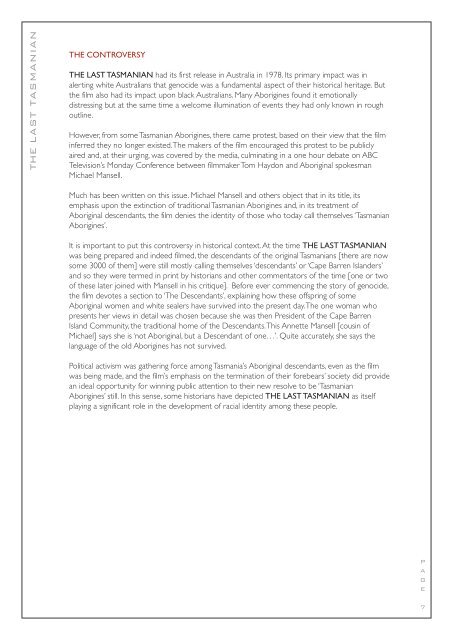

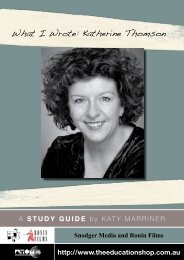
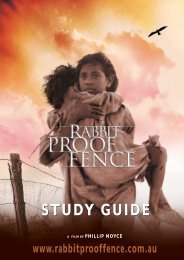

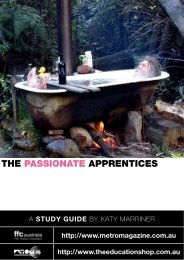
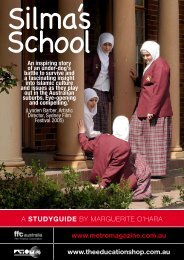
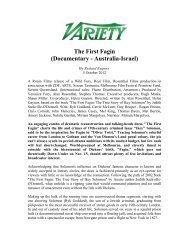

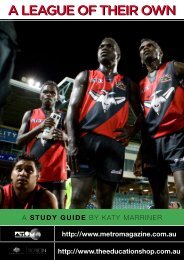
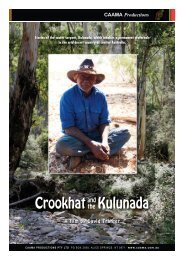
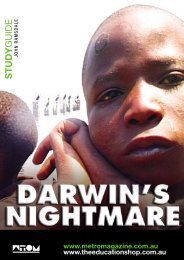
![to download FROHE OSTERN! [HAPPY EASTER!] - Ronin Films](https://img.yumpu.com/33740736/1/184x260/to-download-frohe-ostern-happy-easter-ronin-films.jpg?quality=85)
